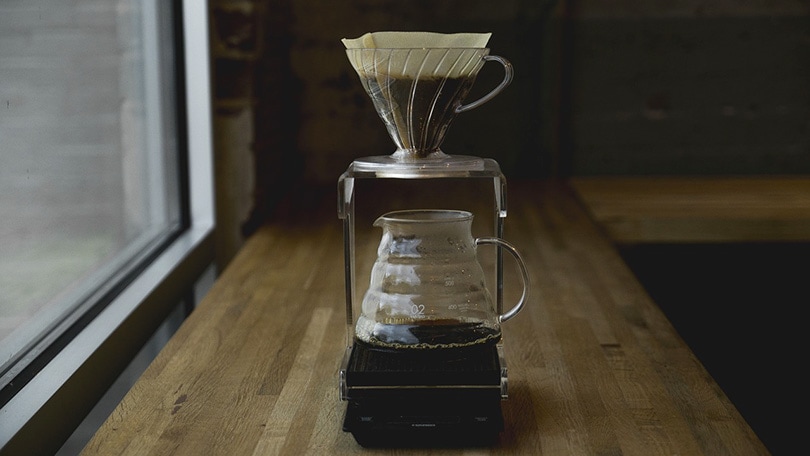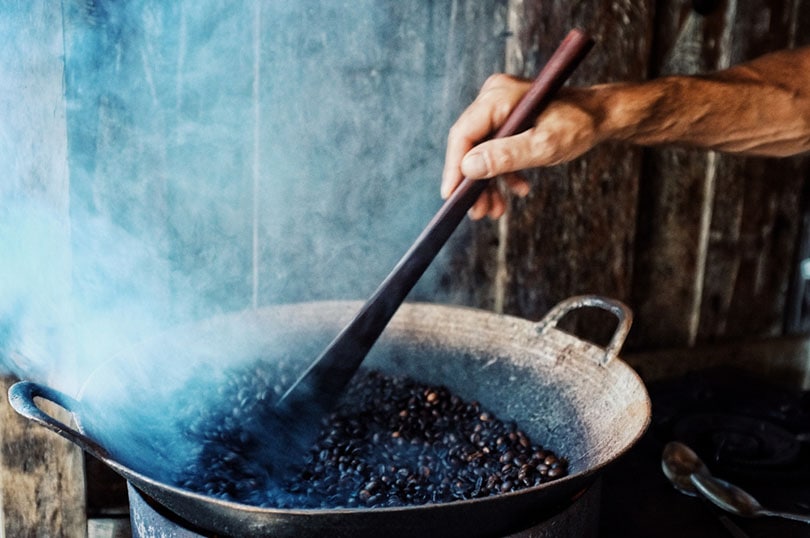
You might boil water for coffee every day, but do you ever think about the science behind that brew? Turning water and coffee grounds into a flavorful drink might seem like magic—especially when slightly different brewing processes lead to such drastically different flavors.
If it seems like something out of a science class, you might think back to the physical and chemical reactions you learned about in school and wonder which it is. The truth is that brewing coffee is a physical change, not a chemical one. But chemical changes are still a big part of the process—especially when it comes to roasting coffee beans.

Brewing—A Physical Process
So, how does water turn into coffee if it isn’t via a chemical reaction? It all has to do with how water dissolves things. When you put water-soluble coffee grounds into the pot, the water seeps into them and starts carrying chemicals that are already in the coffee out. In the end, you’ll get a mix of water molecules and all the delicious molecules that makeup coffee, but new molecules aren’t created.
Even though there’s no chemical reaction, slight changes in the process can still have a huge impact on the type of coffee you get. The exact proportions of different types of molecules change depending on how it’s brewed. One reason for this is that water does not leach out everything at the same rate. Fats and acids are extracted first, and then sugars. Plant fibers are the last of all. That’s why letting your coffee brew too long makes it bitter—too many bitter fibers dissolve!

Roasting: Where The Chemical Reactions Happen
Brewing might be a physical process, but roasting is all chemical. When coffee beans are exposed to heat, they go through all sorts of chemical changes. The basic building blocks that make up plant material are transformed into more than eight hundred different compounds that give coffee its rich flavor and smell. Moisture escapes from the bean as it transforms, losing some proteins and sugars and creating new, more digestible molecules in their place. Like the brewing process, small changes in the roasting process can make a big difference in the final temperature.

The Chemistry of a Good Brew
So if you want a good cup of Joe, what can you do? Knowing the physical and chemical processes can help you! First, you need good beans. Uneven or poorly roasted coffee beans won’t ever hold up to your favorite high-quality roast. Second, you need an even grind. Water leaches into small particles faster than large ones. That’s fine if all your coffee particles are about the same size, but if there’s a mix of fine and coarse coffee, you have a problem. The bitter compounds will leech out of the small particles before the large ones are done brewing.
Once you get to the brewing itself, the two biggest factors are temperature and time. So much of the huge flavor variety in different types of coffee comes down to what parts of your coffee beans have time to dissolve in your water. Differences in temperature will also play a role, giving a cold brew coffee a different flavor than a standard hot water brew. Once you know what you like, consistency is key for getting good results.

Final Thoughts
Making coffee might be a daily occurrence, but don’t take it for granted. The chemical and physical processes that take your morning coffee from bean to cup are complex and fascinating. It’s no wonder that there are so many different types of coffee out there! So next time you sit down with a hot, steaming drink, take a minute to appreciate all the chemical and physical changes that make it possible.
Featured Image Credit: Thomas Martinsen, Unsplash















